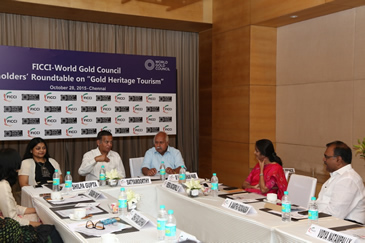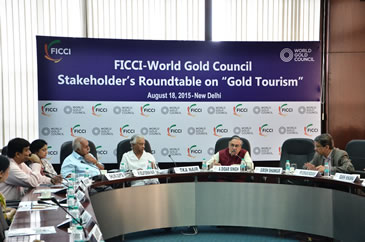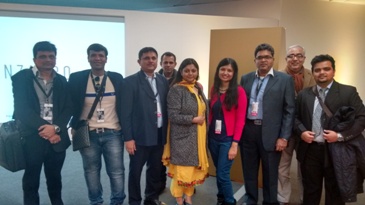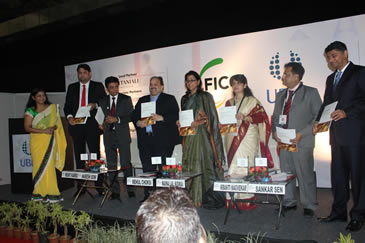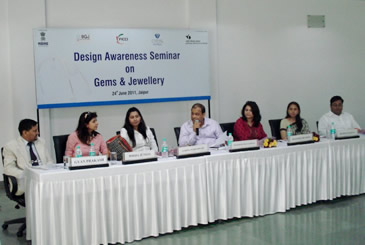The affinity Indians have towards gold is well-known. While they buy gold both as investment or adornment, very few are willing to part with it even in bad times. The country holds 22,000 tonnes of above-the-ground gold stocks and buys around 850 tonnes every year, but sells very less of its holdings. The efforts to monetise the gold stocks in the past did not see much success because of the sentimental attachment to the metal. However, a new survey by World Gold Council (WGC) and Federation of Indian Chambers of Commerce and Industry (FICCI) shows that Indians too are willing to monetise gold provided they are right products in the market.
The survey, which took a sample size of 5,000 respondents across India, showed that consumers are willing to consider interest-bearing gold-based investment products, even if the gold they receive at the end of the tenure is different from what they deposited. More than 49 per cent of respondents said they would be willing to deposit their gold coins and bullion to earn interest.
Moreover, 72 per cent said they were happy to receive different gold from their initial deposit, while 62 per cent said they would prefer cash or India branded gold coins at maturity. Only eight per cent said they would prefer to have their original gold returned to them.
More than a third of respondents would be willing to deposit 25-50 per cent of gold in their possession while three per cent would deposit between 75 per cent and 100 per cent of their gold.
“Demand for gold in India is interwoven with culture, tradition, the desire for beauty and financial protection. It would be futile to control gold demand knowing how much the passion for gold drives savings itself. We believe the solution to meeting India’s enduring appetite for gold lies not in restricting the import of gold, but in making better use of the gold that is already in the country, making it a productive fungible asset class like any other financial savings,” Somasundaram PR, managing director, India, World Gold Council, said.
“The need of the hour is to re-engage all stakeholders to develop a coherent long-term ‘India gold policy’ that results in a robust infrastructure for gold, drives standardisation and transparency, encourages gold-based investment products and supports the economic priorities of the country. With India at the centre of the global gold eco-system, it is imperative that we find ways of mobilising and monetising the 22,000 tonnes of gold in Indian households to fund economic growth,” he said.
While ranking the assets the respondents would liquidate in a crisis, bank deposits came first. However, most respondents cited gold jewellery, which is one of the largest stores of wealth, as their second choice for liquidation. Many respondents said large items of jewellery would be sold first, because most ancestral jewellery is old-fashioned and can no longer be worn. This suggests that attachment to such pieces may not be as sticky as is widely believed.
However, the large stocks of Indian gold are still not monetised. There are two products that currently help monetisation of gold to some extent – gold loans and gold deposit schemes. Gold savings account is a potential product that has been successful in many other economies.
Using gold as collateral for loans is an age-old product in India. Loans, which were mainly offered by pawnbrokers and informal agents, is gradually getting organised with non-banking financial companies and banks getting into gold loans. Gold loans have helped customers use their gold assets for economic growth like purchasing agricultural equipment and household goods, setting up new businesses or spending for education. The organised gold loan industry is valued at more than Rs 1 lakh crore.
Gold deposit scheme (GDS) was introduced in 1999. The scheme allowed partial withdrawal of deposited gold and premature payment was allowed in the form of gold or cash and cash loan against the deposited gold. It also offered exemption from wealth tax and capital gains tax.
In 2013, the Reserve Bank of India allowed banks to launch the scheme without prior approval from it. Mutual funds also were allowed to participate. But the response to the scheme has been far from desirable. According to some estimates, the scheme was able to collect only 15 tonnes of gold.
First of all, very few banks offer the scheme and those who offer have set the minimum quantum for deposit at anywhere between 500 gm to one kg of gold, making the scheme more suitable for temples and institutions than individuals. The product is also not widely marketed. Banks also do not have the facility to quickly assay the purity of the gold.
WGC finds gold savings accounts more suitable for the Indian market. The product encourages consumers to move away from purchasing physical gold and instead saving the same amount in a bank account. This helps the money become part of the financial system. For this, Indian banks should be allowed to use gold as part of their liquidity reserves. This would incentivise them to introduce gold-based savings products.
Under the savings account, the bank should credit equivalent grams of gold against the cash in the account. There should be flexibility in terms of frequency and amount of cash deposits. The savings could be withdrawn as gold or cash at any point of time.
Apart from savings account, the government and the RBI can also look at different products to monetise gold. Simple bank savings products could allow customers to convert physical gold into a gold account, withdrawing either cash or gold in return.
There should also be investment products that would allow customers to convert physical gold into a bank account and take a position on the gold price. Customers with restricted income, such as retirees, can pay interest on loans as gold coins. Education loans can be offered against gold and house owners can provide gold instead of rupees as mortgage equity.
“Through this report we have re-examined many assumptions around gold and have also suggested ways of monetising this asset. We hope that this report will form the basis for formulating a comprehensive public policy on gold,” A Didar Singh, secretary general of FICCI, said.
All Indian Gems and Jewellery Trade Federation too has been making recommendations to the government seeking efforts to monetise gold stocks. “We have suggested that certain licenced jewellers be allowed to attract gold from consumers and deposit the same with scheduled banks. This will be easier to unlock the gold stocks rather than setting up a bullion corporation of getting banks to do this. They do not have the infrastructure of jewellers,” said Bachhraj Bamalwa, former chairman of the federation.
As per the Rashtra Suvarna Nivesh Scheme, proposed by GJF, gold deposits from individuals and institutions will be collected through the jewellery outlets. The industry body will be responsible for refining the gold and handing it over to banks as bars. GJF has tied up with Nova Scotia Bank, a major supplier of gold to the industry, for this purpose. The bank in turn will supply this gold to the jewellers and bullion traders.
The scheme has proposed to offer 2.5 to three per cent interest on the deposits, which is slightly higher than the interest offered by the banks. Moreover, the interest income from the deposits will be exempted from income tax, capital gains tax and wealth tax. At the end of the tenure the depositor will receive gold in the form of coin or bar.
“As far a customer is concerned, he would prefer to deposit jewellery with his trusted jeweller than a bank. We had also proposed that the transaction would happen through demat account and RBI would be able to monitor and control the scheme. This will also give adequate protection to the consumer,” said Haresh Soni, chairman of GJF.
There is, however, an element of risk in terms of the quality of gold, which will be returned to the customer when the deposit period is over or when a depositor wants a premature withdrawal from the scheme. The gold coin or bar returned may be certified but there is very little that customers can do to verify the authenticity of the certification. Although it is an unlikely event, but geopolitical crises in economies or currencies can make government agencies defer the redemptions or premature withdrawals from the gold monetisation schemes.



